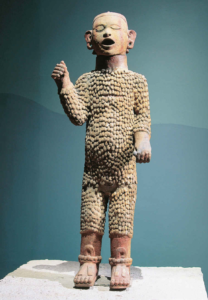Or:
How the Woke monster originated
In 1453, Constantinople had finally fallen to the Turks. The great bulwark of Christendom had become the capital of a Muslim empire. The Ottomans, prompted by their conquest of the Second Rome to recall prophecies spoken by Muhammad, foretelling the fall to Islam of Rome itself, had pressed on westwards. In 1480, they had captured Otranto, on the heel of Italy. The news of it had prompted panic in papal circles—and not even the expulsion of the Turks the following year had entirely settled nerves. Terrible reports had emerged from Otranto: of how the city’s archbishop had been beheaded in his own cathedral, and some eight hundred others martyred for Christ.
Across Christendom, then, dread of what the future might hold continued to be joined with hope: of the dawning of a new age, when all of humanity would be gathered under the wings of the Spirit, that holy dove which, at Jesus’ baptism, had descended upon him from heaven. The same sense of standing on the edge of time that in Bohemia had led the Taborites to espouse communism elsewhere prompted Christians to anticipate that all the world would soon be brought to Christ. In Spain, where war against Muslim potentates had been a way of life for more than seven hundred years, this optimism was particularly strong. Men spoke of El Encubierto, the Hidden One: the last Christian emperor of all. At the end of time, he would emerge from concealment to unify the various kingdoms of Spain, to destroy Islam for good, to conquer Jerusalem, to subdue ‘brutal kings and bestial races’ everywhere, and to rule the world. [pages 301-302]
On the next page Holland continues:
Ferdinand was certainly free now to look to broader horizons. Among the cheering crowds watching the royal entry into Granada was a Genoese seafarer by the name of Christopher Columbus…
Three years later, during the course of a voyage blighted by storms, hostile natives and a year spent marooned on Jamaica, Columbus’ mission was confirmed for him directly by a voice from heaven. Speaking gently, it chided him for his despair, and hailed him as a new Moses. Just as the Promised Land had been granted to the Children of Israel, so had the New World been granted to Spain. Writing to Ferdinand and Isabella about this startling development, Columbus insisted reassuringly that it had all been prophesied by Joachim of Fiore. Not for nothing did his own name mean ‘the dove’, that emblem of the Holy Spirit. The news of Christ would be brought to the New World, and its treasure used to rebuild the Temple in Jerusalem…
In 1519, more than a decade after Columbus’ death, a Spanish adventurer named Hernán Cortés disembarked with five hundred men on the shore of an immense landmass that was already coming to be called America. Informed that there lay inland the capital of a great empire, Cortés took the staggeringly bold decision to head for it. He and his men were stupefied by what they found: a fantastical vision of lakes and towering temples, radiating ‘flashes of light like quetzal plumes’, immensely vaster than any city in Spain. Canals bustled with canoes; flowers hung over the waterways. Tenochtitlan, wealthy and beautiful, was a monument to the formidable prowess of the conquerors who had built it: the Mexica… [pages 303-305]
The bubbles on this statue represent lumpy fat
deposits of flayed human skin. Xipe Totec, worshipped
in central America as the Flayed One, appeared to
the Christian conquerors of the Mexica
not a god but a demon.
The above image and footnote text appears in Holland’s book. Just compare the art of these Amerindians with that of my last post in the ‘European beauty’ series! (Pallas Athena in the Austrian parliament).
Without sacrifice, so the Mexica believed, the gods would weaken, chaos descend, and the sun start to fade. Only chalchiuatl, the ‘precious water’ pumped out by a still-beating heart, could serve to feed it. Only blood, in the final reckoning, could prevent the universe from winding down.
To the Spaniards, the spectacle of dried gore on the steps of Tenochtitlan’s pyramids, of skulls grinning out from racks, was literally hellish. Once Cortés, in a feat of unparalleled audacity and aggression, had succeeded in making himself the master of the great city, its temples were razed to the ground. So Charlemagne, smashing with his mailed horsemen through dripping forests, had trampled down the shrines of Woden and Thunor. The Mexica, who had neither horses nor steel, let alone cannon, found themselves as powerless as the Saxons had once been to withstand Christian arms…
A decade before the conquest of Granada, Ferdinand had proclaimed it his intention ‘to dedicate Spain to the service of God’. In 1478, he had secured permission from the pope to establish, as the one institution common to both Aragon and Castile, an inquisition directly under royal control. 1492, the year of Granada’s fall and of Columbus’ first voyage, had witnessed another fateful step in the preparation of Spain for its mission to bring the gospel to the world. The Jews, whose conversion was destined to presage Christ’s return, had been given the choice of becoming Christian or going into exile. Many had opted to leave Spain; more, including the chief rabbi of Castile himself, had accepted baptism. [pages 305-306]
It was the National Socialists, not the Christians, who realised for the first time in history that this was a grave mistake: that the yardstick for discrimination is not faith but genes. But how many American racialist forums will pay homage to Uncle Adolf next week…?
